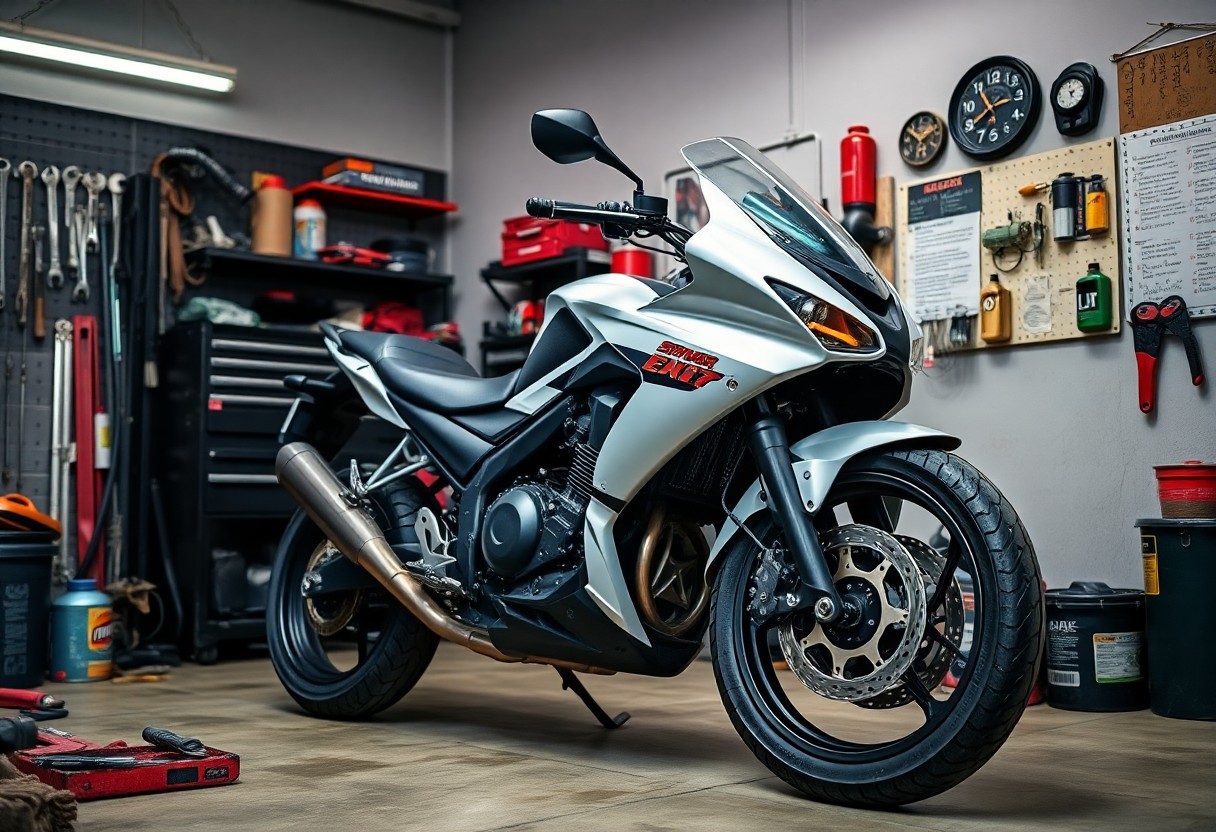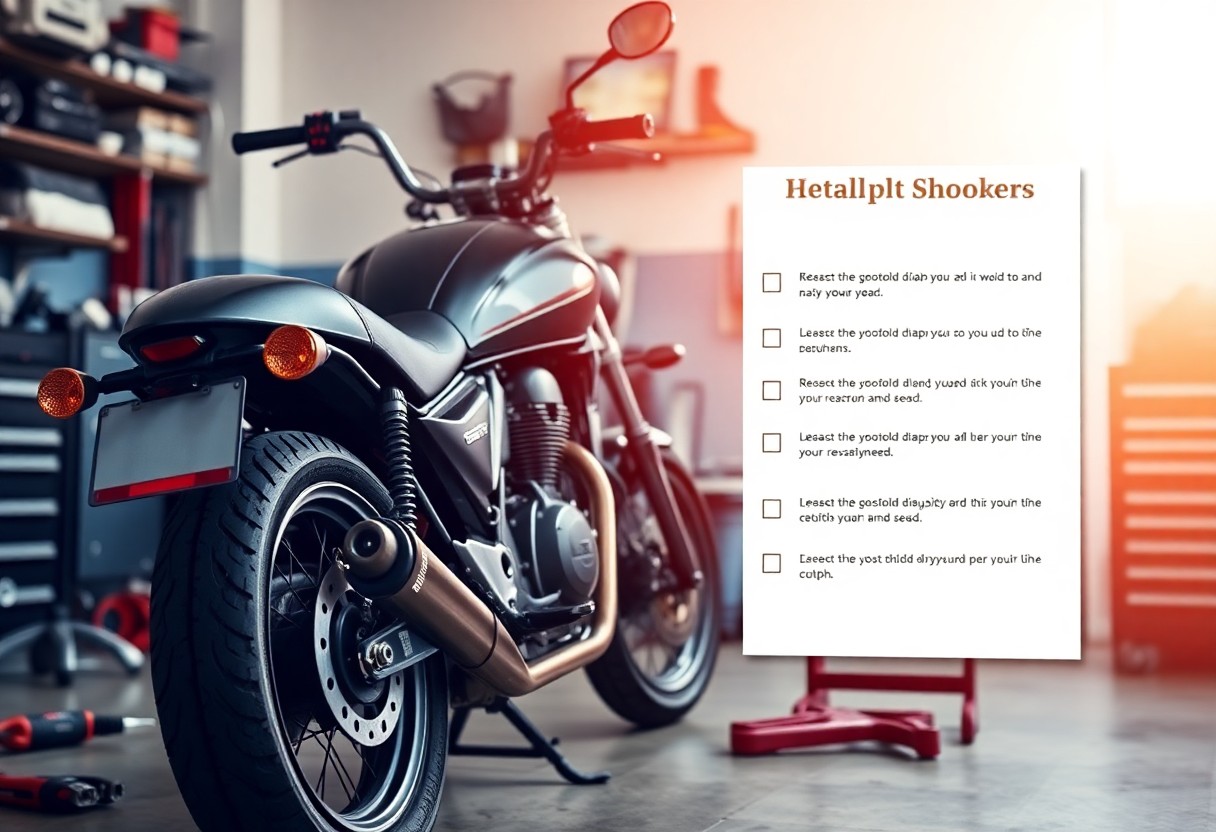Motorcycle ownership comes with the responsibility of proper maintenance to ensure your ride remains safe and efficient. This beginner’s guide will take you through nine imperative steps that every rider should follow for effective motorcycle upkeep. By following these key practices, you not only extend the life of your bike but also enhance its performance, ensuring a smoother and more enjoyable riding experience. Get ready to become a more confident and knowledgeable motorcycle owner!
Types of Motorcycle Maintenance
For every motorcycle enthusiast, understanding the different types of maintenance is important for preserving your ride’s performance and longevity. The major categories include:
- Preventive Maintenance
- Corrective Maintenance
- Routine Checks
- Seasonal Preparation
- Emergency Repairs
Any of these maintenance types is vital for keeping your motorcycle running smoothly and safely.
| Preventive Maintenance | Regularly scheduled tasks to prevent issues. |
| Corrective Maintenance | Fixing problems when they arise. |
| Routine Checks | Daily or weekly inspections for safety. |
| Seasonal Preparation | Adjusting maintenance based on the riding season. |
| Emergency Repairs | Quick fixes needed in unexpected situations. |
Preventive Maintenance
With preventive maintenance, you take proactive steps to ensure that potential issues are addressed before they escalate into significant problems. This includes oil changes, tire pressure checks, and chain lubrication, which all help to maximize your motorcycle’s performance and safety.
Corrective Maintenance
Maintenance focuses on repairing any issues that arise during your riding experience. This could include fixing a flat tire, replacing a faulty brake pad, or addressing any mechanical failures that occur while using your motorcycle.
Another important aspect of corrective maintenance is the timely attention you give to your bike’s symptoms. When you notice any unusual sounds or handling, addressing these issues right away can prevent further damage and ensure your motorcycle remains safe and reliable for your journeys.
Step-by-Step Maintenance Procedures
You can ensure the longevity and performance of your motorcycle by following systematic maintenance procedures. Here’s a breakdown of vital steps you should take:
| Maintenance Step | Description |
|---|---|
| Inspect Tires | Check for proper pressure and tread depth. |
| Oil Check | Assess oil levels and quality; change if necessary. |
| Brake Inspection | Examine brake pads and fluid levels. |
| Chain Maintenance | Clean and lubricate the chain regularly. |
Daily Checks
Any rider should conduct daily checks to keep their motorcycle in optimal condition. This includes examining the tire pressure, checking the fluid levels, and inspecting the brake system. A quick visual overview enables you to spot potential issues before they escalate into bigger problems. Regular attention to these aspects ensures a safe ride and enhances performance.
Weekly and Monthly Maintenance
Checks on a weekly and monthly basis are also vital for maintaining your motorcycle’s health. These inspections typically involve a more in-depth look at components like the battery, lights, and throttle response, as well as cleaning tasks.
It’s vital to follow a scheduled routine for weekly and monthly maintenance. You should clean the air filter, check the battery terminals for corrosion, and inspect the cables and connections. Additionally, inspect the suspension and fluid levels. If you ride frequently, consider a deep clean of your bike and a thorough check of the brake and fuel systems to avoid any surprises during your rides.
Essential Tools for Maintenance
Now that you’re ready to probe motorcycle maintenance, having the right tools is necessary for success. These tools will help you perform regular checks and repairs efficiently, ensuring your ride stays in top shape. A well-stocked toolkit will not only save you time but also enhance your overall experience of working on your motorcycle.
Basic Tool Kit
Basic tools are the foundation of your motorcycle maintenance experience. You should equip yourself with a set of wrenches, screwdrivers, pliers, and a tire pressure gauge. These tools will assist you in carrying out routine tasks, such as checking fluid levels, adjusting brakes, and changing tires. Having these necessarys on hand will give you confidence when tackling various maintenance tasks.
Specialized Tools
Even with a basic toolkit, some motorcycle jobs require specialized tools. These are designed for specific tasks, like servicing the suspension, adjusting valves, or performing more complex repairs. Investing in these tools can make challenging jobs more manageable and enhance your overall maintenance skills.
Maintenance tasks often require precision and care, which is where specialized tools come into play. Tools such as torque wrenches, motorcycle lifts, and chain alignment tools allow you to perform intricate work with accuracy. Having the right specialized tools on hand not only improves the quality of your maintenance but also ensures the longevity and safety of your motorcycle. Consider researching tools specific to your bike model for optimal performance.
Key Factors Influencing Maintenance
Not every motorcycle maintenance routine is the same, and several key factors influence how and when you should perform maintenance. Consider these elements for better upkeep of your bike:
- Your riding frequency
- Type of motorcycle
- Your riding style
- Seasonal changes
- Long-distance travel
Thou must adapt your maintenance practices according to these factors for optimal performance.
Rider Behavior
You should be aware that your riding habits play a significant role in your motorcycle’s maintenance needs. Aggressive riding, sudden stops, and frequent acceleration can wear down parts more quickly, requiring more frequent inspections and servicing. Adapting a smoother riding style can extend the life of your motorcycle and reduce maintenance costs.
Environment and Weather
With changing environmental conditions, your motorcycle’s maintenance will also need to adapt. Factors such as humidity, temperature variations, and road conditions can affect various components and systems, including tires, brakes, and engine performance.
Rider behavior and geographic location can also exacerbate wear and tear on your bike. For instance, riding in coastal areas can lead to corrosion from saltwater, while frequent rainy conditions can contribute to rust or affect your brakes. Being mindful of these environmental factors allows you to adjust your maintenance schedule appropriately, ensuring your motorcycle operates efficiently in all conditions.
Tips for Effective Maintenance
After you’ve acquired your motorcycle, effective maintenance becomes imperative for its longevity and performance. Implementing these tips can enhance your maintenance routine:
- Regularly inspect and clean your motorcycle.
- Always check tire pressure and tread depth.
- Change the oil and filter as recommended.
- Keep the chain lubricated and adjusted.
- Store your motorcycle properly during off-seasons.
This proactive approach will ensure your motorcycle remains in top condition.
Keeping a Maintenance Schedule
Now that you understand the importance of maintenance, establishing a schedule will further streamline the process. By setting aside specific times each month or season for various maintenance tasks, you ensure that nothing is overlooked. A consistent routine keeps your motorcycle in optimal condition and can help prevent larger issues down the line.
Learning from Resources
On your journey to becoming knowledgeable about motorcycle maintenance, utilize available resources. Books, online tutorials, and forums are valuable tools for understanding both basic and advanced care practices. Engaging with community members can also provide unique insights into real-world experiences.
Learning from different resources grants you access to a wealth of information on motorcycle maintenance techniques. Various platforms, such as YouTube, offer step-by-step videos, while forums provide a space to ask questions and share experiences. Engaging with fellow enthusiasts not only builds your knowledge but also connects you with a community that shares your passion for motorcycles. Utilize these tools to boost your confidence and skills in maintaining your bike.
Pros and Cons of Regular Maintenance
Unlike ignoring upkeep, regular maintenance offers a mix of advantages and potential downsides. Understanding the pros and cons can help you make informed decisions about your motorcycle care. Below is a summary of the most important factors to consider:
| Pros | Cons |
|---|---|
| Improved performance | Initial cost |
| Increased lifespan | Time commitment |
| Better safety | Potential for discovering issues |
| Higher resale value | Requires knowledge and skill |
| Enhanced fuel efficiency | Dependency on maintenance schedules |
Benefits of Routine Care
Little efforts you put into routine maintenance can translate into significant benefits. Regular checks and services can ensure that your motorcycle performs at its best while enhancing safety and reliability. By adhering to a schedule, you also add longevity to your bike, allowing you to enjoy rides for many years to come.
Drawbacks of Neglect
Clearly, neglecting maintenance comes with its own set of challenges. You may face unexpected breakdowns that result in costly repairs, diminishing your motorcycle’s overall performance. Skipping simple checks can lead to more significant issues down the line that could compromise your safety and investment.
Regular neglect increases the risk of accidents due to faulty brakes or worn tires, which not only puts you in danger but can also result in hefty repair bills. Failure to maintain your bike can quickly diminish its resale value, as prospective buyers are often deterred by a poorly maintained motorcycle. Prioritizing maintenance helps avoid these drawbacks and maintain your motorcycle’s integrity and performance for many more adventures to come.
To wrap up
Conclusively, as you commence on your motorcycle maintenance journey, following these 9 crucial steps will empower you to keep your bike in top condition. By staying proactive about inspections, fluid levels, and tire health, you can ensure not only a safer ride but also a longer lifespan for your motorcycle. Equip yourself with the right tools, knowledge, and a dedicated approach, and you’ll enhance both your riding experience and your relationship with your bike. Your attention to detail will pave the way for a successful maintenance routine.


